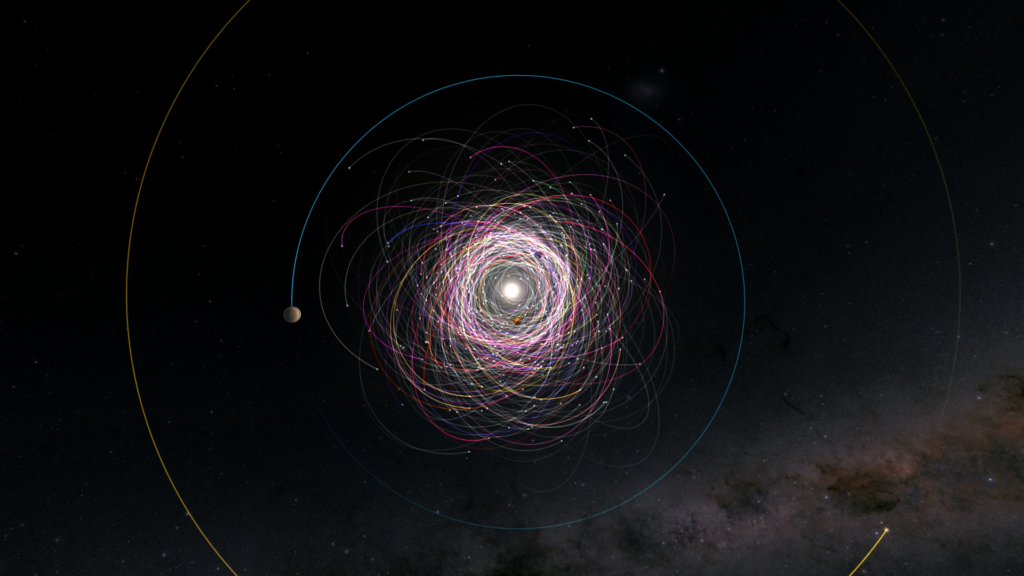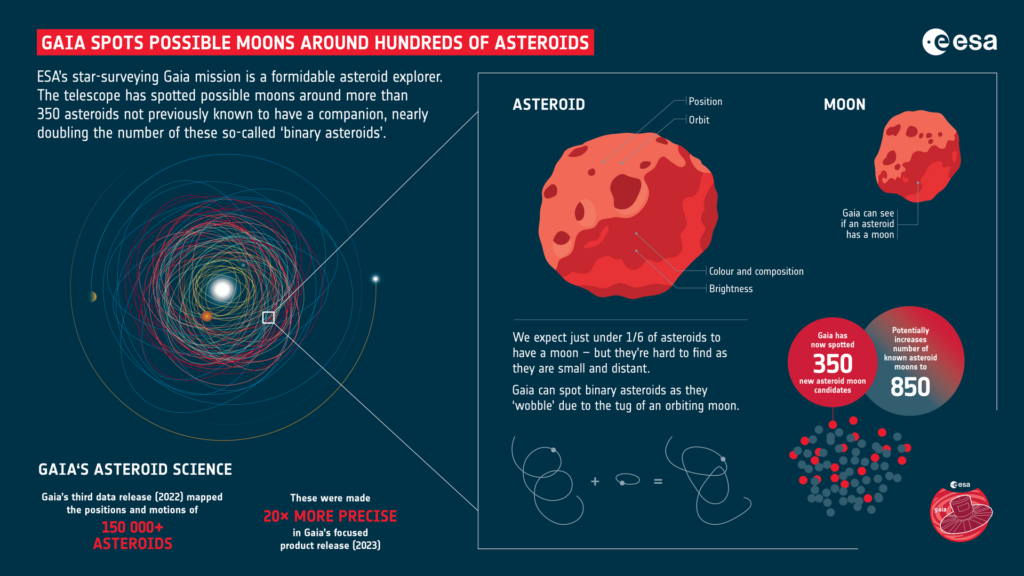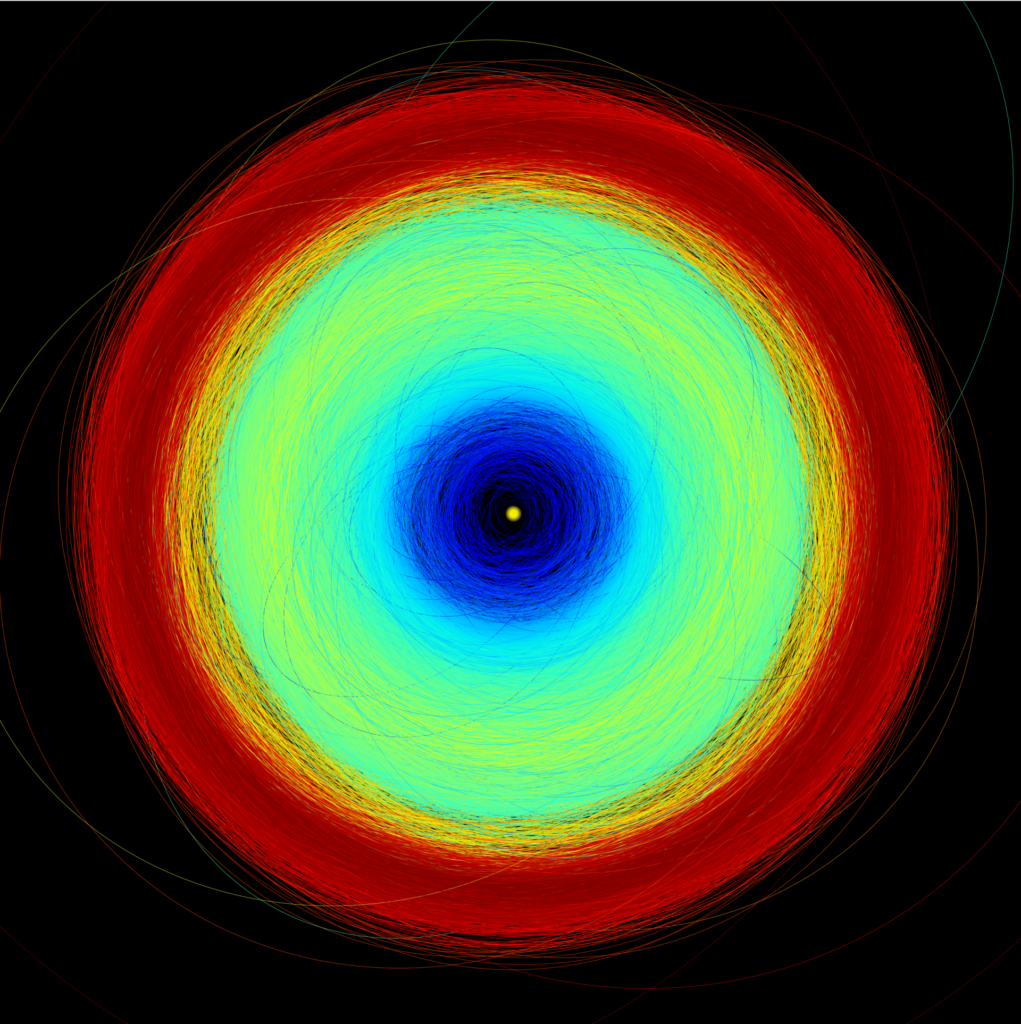Gaia space observatory has confirmed its ability to study asteroids, having found potential moons in 350 small planets. This is stated in the message published on the website of ESA.

As of today, astronomers have discovered over one million asteroids. It is believed that every sixth of them has a companion. But in reality, researchers have only managed to find about 500 hundred asteroid moons so far. This is due to their very small size and great distance to them.
The Gaia space observatory has already studied binary asteroids in the past and confirmed that signs of their tiny moons are detectable in the telescope’s ultra-precise astrometric data. But the new finding proves that Gaia can conduct blind searches and find entirely new candidates.

The third release of Gaia data contains position and motion data for more than 150,000 asteroids. The third release of Gaia data contains position and motion data for more than 150,000 asteroids. Gaia has also collected data on the chemical composition of asteroids, making the largest ever collection of their light curves to determine their surface color and chemical composition.

Recall that in October this year, ESA plans to launch the Hera mission. Its target will be the binary asteroid Didymos. In 2022, the NASA-built DART probe crashed into its moon Dimorphos. The purpose of the experiment was to test the possibility of changing the orbit of a small body by kinetic influence on it.
Hera will reach Dimorphos in late 2026, after which it will thoroughly examine both bodies and the man-made bombardment site. The spacecraft will also release a pair of cubesats that will attempt to land on the surface of Dimorphos at the end of its mission.
Recall that the Gaia observatory recently collided with a micrometeorite.
According to ESA


